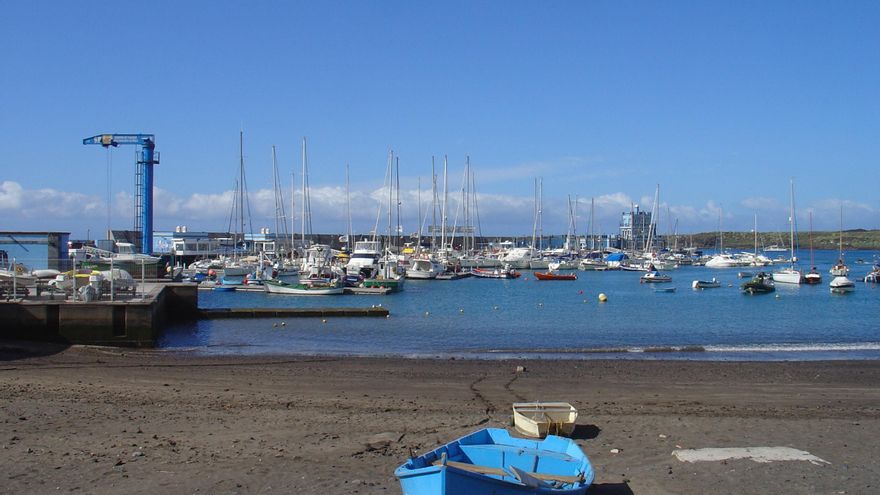Exploring the Origins of Las Galletas: A Local Legend

In this coastal corner of Arona, the name Las Galletas has a rather mundane origin that remains uncertain.
Is it stale ship’s bread? Lost provisions from a shipwreck? While it might be tempting to weave a maritime legend, the field of philology presents a less romantic perspective.
The Canarian Academy of Language (ACL) admits that no definitive documents exist on the matter. Nevertheless, there are strong indications to dispel myths and point towards a plausible explanation.
Few Certainties
The ACL posits the most plausible explanation as deriving from the Portuguese term calheta, meaning “cove” or “narrow inlet”. This term aligns with the geography: a small, sheltered bay, ideal for landings and fishing activities.
The form calheta may have adapted into Spanish as galleta/galletas, replacing the initial consonant /k/ with /g/ (a common transformation in such loans) and transforming the Portuguese /ʎ/ into the Spanish digraph «ll».
The final leap to “Las Galletas” is completed with the plural article characteristic of island toponymy (“Las Caletillas”, “Los Cristianos”, “Las Chafiras”…).
Documented since the 16th Century
The repartimientos (documents used by Castilian conquerors to distribute land after the conquest of Tenerife) mention the toponym at the beginning of the 16th century.
These documents, recorded in protocols, data letters, and account books, provide a wealth of information regarding the toponymy of the time, describing boundaries, ravines, paths, caves, and threshing floors.
In 1516 and 1522, there are references to lands “leading to Las Galletas” or the “ravine of Las Galletas”. This proves that the name was already established just a couple of decades after the conquest, ruling out any modern invention or tourist label.
Additionally, the coastline of Arona and San Miguel de Abona is filled with geographical nicknames that name beaches, points, and ravines according to their shape or use: Los Abrigos (landing bays), La Tejita (possibly referring to lava roofs or salt tiles), Las Galletas… In this descriptive naming system, a term meaning “small cove” fits better than an isolated shipwreck episode.
What the Legend Says
- The Ship Carrying Biscuits.- The legend states that a vessel laden with sailor’s biscuits ran aground in the area, leaving the beach littered with cakes. It makes for an appealing anecdote, ideal for brochures, but there are no documents to support it. Neither chroniclers, repartimientos, nor notarial protocols mention this supposed “biscuit-related” shipwreck.
- The Direct Culinary Derivation: Biscuit = Cake.- It is true that “galleta” has existed in Spanish since the Middle Ages, and the ship biscuit (hard cake for voyages) was common in Atlantic navigation. However, mere lexical coincidence is not enough to justify a toponym, especially when a more coherent toponymic alternative (calheta) and early documentation exist that does not mention the food.
- The French Route: galette = Pebble.- Some popular works cite the French term galette (“flat bread”, but also “flat stone” in regional slang) as the origin. However, the French presence in Tenerife in the 16th century was much less significant than the Portuguese, and again, there is no evidence in official texts. The ACL itself notes that the hypothesis lacks academic support.
All Signs Point to Portugal
While Tenerife was conquered by the Crown of Castile, the Portuguese presence in the Canary Islands was significant, which led to an influx of lusitisms in Canarian lexicon, a phenomenon also reflected in toponymy.
In Madeira and the Azores, Calheta/Calhetas are common as coastal microtoponyms, making the transfer to Spanish of a place with similar characteristics entirely plausible.
Furthermore, the plural with the article (Las Galletas) follows the pattern of various Canarian and peninsular toponyms (Las Caldas, Las Ventas, Las Negras…).
Popular Tourist Destination
Las Galletas (Arona, southern Tenerife) retains the essence of a fishing village and serves as a “gateway to the sea” for those seeking a local atmosphere, an urban beach, and nautical outings. Its small Playa de Las Galletas features a mix of pebbles and dark volcanic sand, closely integrated into the urban core alongside the fish market and traditional dock.
Just steps from the sand is Marina del Sur–Las Galletas, a recreational and fishing harbour that currently forms a significant part of the tourism offer.
It boasts 176 berths (up to 20 m in length), slipway services, and companies organising boat excursions, whale watching, and activities like jet skiing or chartering, as well as being a base for diving to renowned spots such as Montaña Amarilla, Palm-Mar Cave, or the wreck El Condesito.
All of this is set within the protected surroundings of the Malpaís de La Rasca and near the neighbouring tourist hub of Costa del Silencio and Ten-Bel, once one of the most sought-after locations in Tenerife for summer vacations.
















